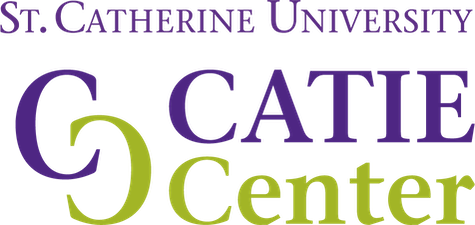Focused Goals for Purposeful Practice
Ericsson (1993, 2016) is the preeminent researcher in the science of expertise and coined the phrase “deliberate practice” as a method for becoming an expert. Ericsson cautions that just putting in effort does not lead to improvement in a skill. This is what he terms “naive practice.” Instead, for the time you spend to be worthwhile, it needs to be “purposeful” which includes the following elements:
- A suitable level of challenge
- Focused effort
- Achievable goals
- Motivation
In creating focused goals, this next step draws on what you learned in the assessment phase and helps you create a more concrete plan of action.
Creating Focused Goals
To support you in doing that, we have created an online tool for you to make S.M.A.R.T. goals using Taylor’s framework. (You can adapt it if necessary later, but please use Taylor’s framework to start.) This tool will also allow you to document your work and communicate with your interpreting mentor and ASL coach. You will select 1-2 Major Features to focus on based on your assessment and your discussions with your ASL coach and interpreting mentor.
S.M.A.R.T. Goals
You may have encountered S.M.A.R.T. goals in other elements of your life. It stands for:
- Specific/Strategic
- Measurable
- Achievable
- Relevant (or Results-bound)
- Time-Bound
These elements provide a goal that is focused and incorporates a measure that gives structure to the feedback.
Making a S.M.A.R.T. Goal
Here’s an example starting goal:
- Improve my use of classifiers
How “smart” is this goal? How will you measure it? What strategies will you use to achieve it? When will you complete it by? None of that is in the goal, so while it gives some sense of direction, it doesn’t provide the focus to move away from “naive” practice.
For the GTC process of creating S.M.A.R.T. goals, we are using the terminology in Taylor’s framework from Interpretation Skills: English to American Sign Language and Interpretation Skills: American Sign Language to English.
You start with the change you want to see in your work, add what are the indicators of that change, what you will use to measure it, what target level of competency you want – and when it all comes together – it provides you with a smart goal.
| Major Feature | Key Skills: | Tools: | Rating Scale | Timeline | S.M.A.R.T. Goal |
| What area have you identified needing improvement? | Key skills from Taylor (2017,2002) (in the drop-down menu) or another specific skill | What will you use to get feedback on your performance? | What is your target level of skill/error? | When will this be accomplished by? | Strategic/specific, Measurable, Attainable, Results-based, and Time-bound —- (These goals will be available in the drop-down on Activity tab) |
Here’s a sample related to healthy living:
| Major Feature | Key Skills: | Tools: | Rating Scale | Timeline | S.M.A.R.T. Goal |
| Diet | Eat more fruits and vegetables
Eat less processed sugar |
Track my intake in a daily food diary | % of baseline | One month | Change my daily diet by eating 50% more fruits and vegetables and 50% less processed sugar by next month as tracked in a food diary. |
See how the goal healthier eating is a good direction but is vague in terms of how it will be carried out and measured. The S.M.A.R.T. goal provides more focus and ways to tell if you are succeeding or not. From there, you can adjust the goal.
An Interpreting Example
Here’s an example using Taylor’s, Major Features, Key Skills and rating scales. Let’s start with the general desire to improve the use of classifiers.
| Major Feature | Key Skill | Tool | Rating Scale | Timeline | SMART Goal |
| EX: Classifiers | 4.5: Use accurate body classifiers and body part classifiers | GoReact | May 1, 2018 | EX: Incorporate appropriate amount and type of body classifiers in English to ASL interpretations at a consistent level as measured in GoReact with feedback from mentor by May 1, 2018 | |
| 4.12: Use an appropriate number of classifiers at appropriate times during the communication event | Feedback from Mentor | Skill Level 4 – Consistent |
Let’s analyze the SMART Goal:

See the difference in focus between the first goal and the SMART goal. Having focused goals like this will allow the time that you spend to be much more purposeful and effective.
For more information on S.M.A.R.T. goals, check out: https://learningforward.org/docs/tools-for-learning-schools/tools11-07.pdf?sfvrsn=2
References
Ericsson, K., Krampe, R., and Clemens Tesch-Romer (1993) “The Role of Deliberate Practice in the Acquisition of Expert Performance,” in Psychological Review 1993, Vol. 100. No. 3, 363-406. Retrieved from https://graphics8.nytimes.com/images/blogs/freakonomics/pdf/DeliberatePractice(PsychologicalReview).pdf (Links to an external site.)
Ericsson, K.A. & Pool, R. (2016). Peak: Secrets from the new science of expertise. Boston: Houghton Mifflin Harcourt.
